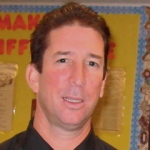CTA Supporting Professional Capital: Part 1
JUNE 6, 2014
Today’s guest blog post comes from Chris Miraglia. Chris is an intermediate school US history teacher from Santa Ana USD. A prior contributor and frequent commenter at this blog, Chris also writes at his own blog and is active on Twitter.
Last summer, a select group of teachers met at the California Teacher Association headquarters in Burlingame as part of the newly formed Teacher Leadership Cohort. The group was composed of teachers of varied levels of experience, as well as coming from diverse school districts. The goal was simple and twofold: tackle an area in education where change is needed, and take on a teacher-leader role (possibly not yet defined) to address that need. The philosophy behind the effort is based on Andy Hargreaves and Michael Fullan’s book, Professional Capital: Transforming Teaching in Every School.
In the two-day session last summer, twenty-plus educators discussed the basic tenets of the book, focusing on implementing change. Teacher empowered change was the buzzword. With assistance from CTA staff and with hours of discussion and team building, each teacher began to formulate a project addressing identified needs in their respective districts. Leaving the two-day session, empowered by the energy generated by these teacher leaders, each individual began the process of identifying the stakeholders in their projects, areas of resistance they might encounter, where they could find support, and what was the timeline for implementation of their goal.

Linda Darling-Hammond (L), and Shanan Brown, with a copy of Darling-Hammond’s book on teacher evaluation.
For me, teacher evaluations have always had an appeal, so I set out to make a change in our process at the district level. For teacher evaluations and observations, my district has utilized an archaic form that does not serve its intended purpose. The first step in the process was meeting with my local president and CTA representative who were informed of my undertaking. With CTA Supporting Professional Capital: Part 1 | InterACT:

